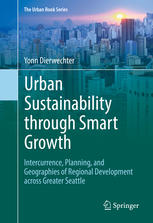

Most ebook files are in PDF format, so you can easily read them using various software such as Foxit Reader or directly on the Google Chrome browser.
Some ebook files are released by publishers in other formats such as .awz, .mobi, .epub, .fb2, etc. You may need to install specific software to read these formats on mobile/PC, such as Calibre.
Please read the tutorial at this link: https://ebookbell.com/faq
We offer FREE conversion to the popular formats you request; however, this may take some time. Therefore, right after payment, please email us, and we will try to provide the service as quickly as possible.
For some exceptional file formats or broken links (if any), please refrain from opening any disputes. Instead, email us first, and we will try to assist within a maximum of 6 hours.
EbookBell Team

5.0
68 reviewsThis book investigates the new urban geographies of “smart” metropolitan regionalism across the Greater Seattle area and examines the relationship between smart growth planning strategies and spaces of work, home, and mobility. The book specifically explores Seattle within the wider space-economy and multi-scaled policy regime of the Puget Sound region as a whole, ‘jumping up’ from questions of city politics to concerns with what the book interprets as the “intercurrence” of city-regional “ordering." These theoretical terms capture the state-progressive effort to promote smarter forms of regional development but also the societal/institutional tensions and outright contradictions that such urban development invariably entails, particularly around problems of social equity. Key organizing themes in the text include: the historical path-dependencies of uneven economic and social development, particularly between Tacoma-Pierce County and Seattle-King County; current patterns of high-wage, medium-wage, and low-wage jobs; the emerging spatial and social structure of recent residential changes, especially with respect to class and race composition; and, finally, transit trends and new urban spaces associated with policy efforts to mitigate highway congestion and car-dependency. Greater Seattle, then, is mapped as a key US urban region inscribed spatially by the uneven search for a more sustainable order.
Historically-sensitive, theoretically-informed and empirically topical, this book is of interest to scholars and students at all levels in regional planning, urban geography, political science, sustainability studies, urban sociology and public policy.